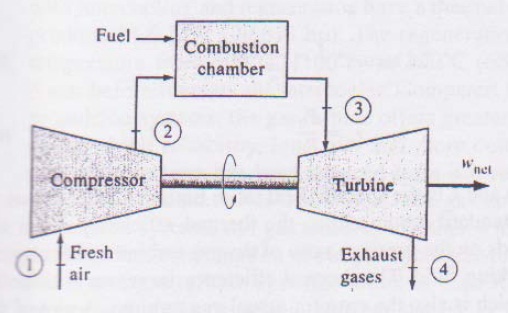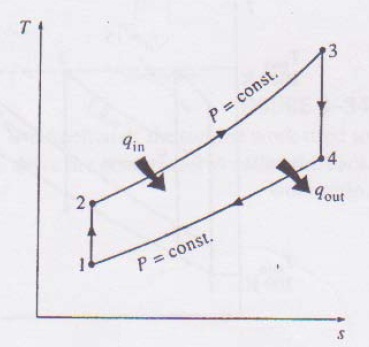Gas turbine generator is turbine generator that uses gas as the working fluid. The simplest gas turbine generator system consists of three main components: compressor, combustion chamber, and gas turbine as shown in Figure 1. Ideal cycle of simple gas turbine generator system is Brayton cycle.

Figure 1: Brayton Cycle of Gas Turbine Generator
The working principle of gas turbine generator system is atmospheric air enter into the compressor which serves to suck and increase air pressure, so that its temperature will rise. Then the air-pressure and high temperature is entered into combustion chamber. In the combustion chamber the fuel is sprayed into air flow, resulting in burning / combustion process.
The combustion process takes place at constant pressure, so it may be said that the combustion chamber is used to raise air temperature. Therefore combustion chamber could be replaced with a heater. High-temperature combustion gas is then entered into gas turbine where its energy is used to rotate turbine blades. As many as 60% of power that is generated by turbine is used to rotate the compressor itself, the rest is used to turn generator.

Figure 2: T-S Diagram of Gas Turbine Generator
In accordance with Figure 1 and Figure 2 above, Brayton cycle can be described as follow:
Stage 1-2 : The process of isentropic compression in the compressor.
Stage 2-3 : The process of heat inclusion or heating at constant pressure in the combustion chamber.
Stage 3-4 : The process of isentropic expansion in gas turbine generator.
Stage 4-1 : The process of disposal heat at constant pressure in heat exchanger equipment.
From figure Brayton cycle and T-S diagram above it would be taken assumption that the cycle is steady state, the difference in potential energy and kinetic energy is ignored because of too small.